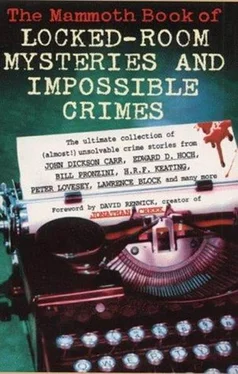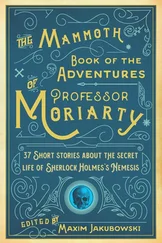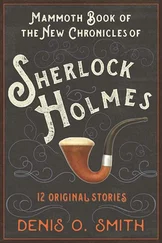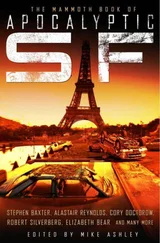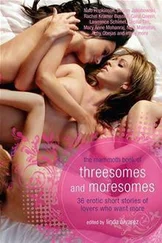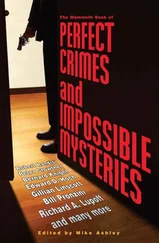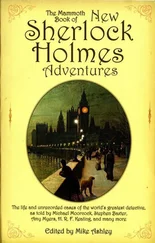Mike Ashley - The Mammoth Book of Locked-Room Mysteries And Impossible Crimes
Здесь есть возможность читать онлайн «Mike Ashley - The Mammoth Book of Locked-Room Mysteries And Impossible Crimes» весь текст электронной книги совершенно бесплатно (целиком полную версию без сокращений). В некоторых случаях можно слушать аудио, скачать через торрент в формате fb2 и присутствует краткое содержание. Жанр: Детектив, на английском языке. Описание произведения, (предисловие) а так же отзывы посетителей доступны на портале библиотеки ЛибКат.
- Название:The Mammoth Book of Locked-Room Mysteries And Impossible Crimes
- Автор:
- Жанр:
- Год:неизвестен
- ISBN:нет данных
- Рейтинг книги:3 / 5. Голосов: 1
-
Избранное:Добавить в избранное
- Отзывы:
-
Ваша оценка:
- 60
- 1
- 2
- 3
- 4
- 5
The Mammoth Book of Locked-Room Mysteries And Impossible Crimes: краткое содержание, описание и аннотация
Предлагаем к чтению аннотацию, описание, краткое содержание или предисловие (зависит от того, что написал сам автор книги «The Mammoth Book of Locked-Room Mysteries And Impossible Crimes»). Если вы не нашли необходимую информацию о книге — напишите в комментариях, мы постараемся отыскать её.
A new anthology of twenty-nine short stories features an array of baffling locked-room mysteries by Michael Collins, Bill Pronzini, Susanna Gregory, H. R. F. Keating, Peter Lovesey, Kate Ellis, and Lawrence Block, among others.
The Mammoth Book of Locked-Room Mysteries And Impossible Crimes — читать онлайн бесплатно полную книгу (весь текст) целиком
Ниже представлен текст книги, разбитый по страницам. Система сохранения места последней прочитанной страницы, позволяет с удобством читать онлайн бесплатно книгу «The Mammoth Book of Locked-Room Mysteries And Impossible Crimes», без необходимости каждый раз заново искать на чём Вы остановились. Поставьте закладку, и сможете в любой момент перейти на страницу, на которой закончили чтение.
Интервал:
Закладка:
“Through the window.”
“Through the window!” echoed Randolph. “Why, man, you yourself showed me that the window had not been opened, and the precipice below it a fly could hardly climb. Do you tell me now that the window was opened?”
“No,” said Abner, “it was never opened.”
Randolph got on his feet.
“Abner,” he cried, “are you saying that the one who killed Doomdorf climbed the sheer wall and got in through a closed window, without disturbing the dust or the cobwebs on the window frame?”
My uncle looked Randolph in the face.
“The murderer of Doomdorf did even more,” he said. “That assassin not only climbed the face of that precipice and got in through the closed window, but he shot Doomdorf to death and got out again through the closed window without leaving a single track or trace behind, and without disturbing a grain of dust or a thread of a cobweb.”
Randolph swore a great oath.
“The thing is impossible!” he cried. “Men are not killed today in Virginia by black art or a curse of God.”
“By black art, no,” replied Abner; “but by the curse of God, yes. I think they are.”
Randolph drove his clenched right hand into the palm of his left.
“By the eternal!” he cried. “I would like to see the assassin who could do a murder like this, whether he be an imp from the pit or an angel out of Heaven.”
“Very well,” replied Abner, undisturbed. “When he comes back tomorrow I will show you the assassin who killed Doomdorf.”
When day broke they dug a grave and buried the dead man against the mountain among his peach trees. It was noon when that work was ended. Abner threw down his spade and looked up at the sun.
“Randolph,” he said, “let us go and lay an ambush for this assassin. He is on the way here.”
And it was a strange ambush that he laid. When they were come again into the chamber where Doomdorf died he bolted the door; then he loaded the fowling piece and put it carefully back on its rack against the wall. After that he did another curious thing: He took the blood-stained coat, which they had stripped off the dead man when they had prepared his body for the earth, put a pillow in it and laid it on the couch precisely where Doomdorf had slept. And while he did these things Randolph stood in wonder and Abner talked:
“Look you, Randolph… We will trick the murderer… We will catch him in the act.”
Then he went over and took the puzzled justice by the arm.
“Watch!” he said. “The assassin is coming along the wall!”
But Randolph heard nothing, saw nothing. Only the sun entered. Abner’s hand tightened on his arm.
“It is here! Look!” And he pointed to the wall.
Randolph, following the extended finger, saw a tiny brilliant disk of light moving slowly up the wall toward the lock of the fowling piece. Abner’s hand became a vice and his voice rang as over metal.
“ ‘He that killeth with the sword must be killed with the sword.’ It is the water bottle, full of Doomdorf’s liquid, focusing the sun… And look, Randolph, how Bronson’s prayer was answered!”
The tiny disk of light travelled on the plate of the lock.
“It is fire from heaven!”
The words rang above the roar of the fowling piece, and Randolph saw the dead man’s coat leap up on the couch, riddled by the shot. The gun, in its natural position on the rack, pointed to the couch standing at the end of the chamber, beyond the offset of the wall, and the focused sun had exploded the percussion cap.
Randolph made a great gesture, with his arm extended.
“It is a world,” he said, “filled with the mysterious joinder of accident!”
“It is a world,” replied Abner, “filled with the mysterious justice of God!”
THE ADVENTURE OF THE JACOBEAN HOUSE by C.N. & A.M. Williamson
Early “ impossible crime ” stories sometimes used gimmicks that were later outlawed as unfair by aficionados of the miracle mystery. The obvious one was the secret panel , which was popular in Victorian mystery novels. Although the following story does include a secret panel , it is not directly related to the solution of the mystery , and although the device used is another one of those later abandoned by authors , its use here is both ingenious and fascinating. Charles Williamson (1859-1920) was an English journalist who married American writer Alice Livingston (1869-1933) in 1895. They began collaborating in 1902 , when they hit on the idea of a novel based on a series of accounts of a man who is acting as a chauffeur , driving an American heiress around Europe. The book , The Lightning Conductor ( 1902 ), was so popular that they produced a whole series of books based on car journeys. The title of The Scarlet Runner ( 1908 ) refers to the car by which detective Christopher Race travels to solve his next mystery. It shows just how romantic the car was perceived in its early days. The book enjoyed some success and was even adapted into a silent film in 1916. The following is one of the more baffling episodes.
The day after Christopher Race came back to London from his tour with the man of the “Missing Chapter” he found on his table a queer telegram. It said: “Please come at once with your car and try solve mystery at old house now used as hotel patronized by motorists. Same rate paid per day for necessary time as for automobile tour.-SIDNEY CHESTER, Wood House, New Forest. References, London and Scottish Bank.” And the message was dated two days back.
Christopher did not see why he should be applied to as a solver of mysteries. However, the telegram sounded interesting. He liked old houses, and his desire to accept the offer was whetted by the fact that it had been made several days ago, and might have been passed on to someone else by this time.
At all events, he thought he would answer the wire, and he did so before washing away the dust of travel which he had accumulated at the rate of thirty miles an hour.
“Just back from journey. Found telegram,” he wired. “Am I still wanted? If so, can come.”
When an answer arrived he had Scarlet Runner ready for another start.
“Yes, urgently wanted,” ran the reply. “Hope you can start this afternoon. But don’t come to Wood House. Will meet you at the Sandboy and Owl, within mile of Ringhurst as you come from London. Please let me know probable hour of arrival. – CHESTER.”
Christopher wired again, “Hope to reach you about seven.” And his hope was justified, as it usually was when he had to depend upon Scarlet Runner. He had often passed the Sandboy and Owl, and remembered the roadside inn for its picturesqueness, so that he lost no time in finding the way.
“I have come to see a Mr Chester, who will be here in ten or fifteen minutes,” Race said to the landlord, who looked as if he might have had a meritorious past as a coachman in some aristocratic household.
The sporting eye of the old man suddenly twinkled. “I think, sir,” he answered, “that the person you expect has arrived, and is waiting in my private parlour, which I have given up for the – for the purpose.”
The landlord’s manner and slight hesitation, as if in search of the right word, struck Christopher as odd; but it was too late to catechize the old man in regard to Mr Chester, no matter how diplomatically.
The dusk of autumn draped the oak-beamed hall with shadow, and one lamp only made darkness seem more visible. The landlord opened a door at the end of a dim corridor, and said respectfully to someone out of sight, “The gentleman with the motor has arrived.” Then he backed out of the way, and Christopher stepped over the threshold. He saw a girl rise up from a chair, crumpling a telegram which she had been reading by the light of a shaded lamp.
Читать дальшеИнтервал:
Закладка:
Похожие книги на «The Mammoth Book of Locked-Room Mysteries And Impossible Crimes»
Представляем Вашему вниманию похожие книги на «The Mammoth Book of Locked-Room Mysteries And Impossible Crimes» списком для выбора. Мы отобрали схожую по названию и смыслу литературу в надежде предоставить читателям больше вариантов отыскать новые, интересные, ещё непрочитанные произведения.
Обсуждение, отзывы о книге «The Mammoth Book of Locked-Room Mysteries And Impossible Crimes» и просто собственные мнения читателей. Оставьте ваши комментарии, напишите, что Вы думаете о произведении, его смысле или главных героях. Укажите что конкретно понравилось, а что нет, и почему Вы так считаете.
